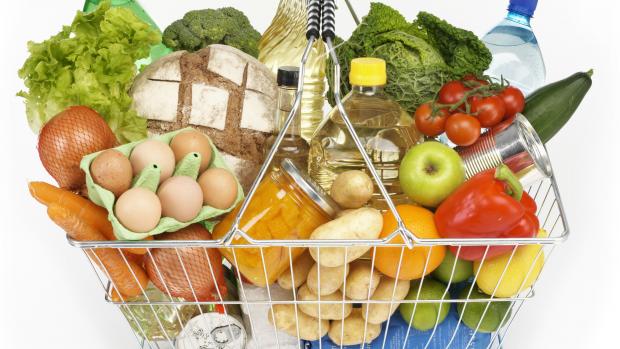
Ten Tips for Healthy Eating on a Budget
In the current economic crisis, eating on a budget has become a way of life for many families. However, whilst it may be tempting to buy less healthy processed options which appear to give you a lot of food for a cheap price, making such choices can have negative effects on your health.
Although it is widely believed that processed and fast foods are cheap options and eating healthily means you need to have money to burn, this does not need to be the case. With careful planning and few money saving tips, it is possible to have a healthy diet within even the most meagre food budget.
How to Eat Healthily on a Budget
1. Buy in season
Fruit and vegetables are generally cheaper at the time of year that they are in season. Not only this but they tend to taste a lot better at this time of year as well. Nowadays we are so used to being able to buy whichever product we need all year round, that we no longer think about what is in season.
When choosing meals to cook, look for those that are made with produce that is in season, or adapt recipes to include seasonal vegetables rather that those that feature out of season products that cost twice the price.
2. Buy in bulk
Buying in bulk generally means that you get more of the product for your money. This is particularly useful for larger families that get through a lot of food, and for products that have a long shelf life such as those in cans or jars or even breakfast cereals.
If you eat a lot of certain foods, it may be worth heading to a supermarket that caters for buying in bulk to stock up on these items and then supplement these staples with fresh produce every week.
Bulk buying generally works out cheaper, however, it should be noted that if you are buying large amounts of certain products and then end up throwing them out as you do not get through them, this is probably a false economy.
Bulk buying can also lead to overeating if you find that you are eating more than you normally would to try to finish off a packet before it expires, or simply because there is just a large amount of food there eat.
To keep portions reasonable and for occasions when small serves of food are required, such as children’s lunch boxes, portion out the food yourself into smaller bags or containers. This stops you from overeating and is a lot cheaper than buying individually portioned foods.
3. Make use of your freezer
Freezers are a great way to save as they prevent waste, as well as saving you time. Having a well-stocked freezer can mean the difference between grabbing $50 worth of pizza for the family on the way home after a busy day and simply taking out a healthy homemade dish you have made previously for a fraction of the cost and heating it up. By getting organized and cooking up large healthy dishes such as stews and even homemade pizzas with lots of vegetables and freezing them you can guarantee you will always have a healthy meal on hand and are less likely to waste money buying less healthy or more expensive quick alternatives.
Frozen vegetables can also be a lot cheaper and in some cases more nutritious than fresh as they are frozen directly at harvest. The fact that they are frozen means you can always have them in stock and don’t have to worry about wasting them if they are not eaten before the go bad.
4. Plan your shopping trips
Checking you cupboards, making a list of what you need and planning your meals for the week ahead can save a lot of time and money and is likely to be healthier too. Going to the supermarket without a list makes you far more likely to grab ingredients at random, so you buy more, pay more and still don’t necessarily have foods that go well together to make a nutritious meal.
5. Bulk up meals with cheap, healthy ingredients
Adding cheaper foods like vegetables, legumes and dried peas to meat dishes is a great way to make the dish go further, as well as adding extra nutritional benefits such as fiber and vitamins.
Grating vegetables into mince based dishes or adding lentils to stews or curries adds bulk and still tastes great. For fussy eaters, finely grated vegetables are barely noticeable, and for the more adventurous you may even like to omit the meat altogether a few times a week and eat vegetarian meals for a cheaper and healthier alternative.
6. Choose cheaper proteins
The protein part of a meal such as meat, poultry or fish is usually the most expensive part of the dish, so by choosing cheaper sources of protein you can cut costs dramatically. Most Americans eat too much red and processed meat anyway, so using lower cost alternatives that are also nutritious instead may also be beneficial for health.
Eggs, tofu, legumes and nuts all make great meat replacements and can generally be sourced fairly cheaply. Tinned fish can also be a cheaper alternative and is easy to keep on hand any time. (See also: Best sources of protein)
7. Look for deals
Supermarkets constantly have deals and offers on products which make them cheaper to buy, so keep your eyes open for products that you use a lot and buy more of them when they are on sale.
It is important however, to consider what you actually need before buying. If you do not usually eat the product, it is not worth buying just because it is on special, especially in large amounts as this is likely to end up being a waste of money.
8. Use supermarket generic products
Most supermarkets have cheaper home brand versions of common products such as pasta, tinned foods and other cupboard staples. These are generally not very different from more expensive products and are often even made in the same place and just given a different label.
9. Avoid smaller convenience stores
Larger supermarkets are generally much better value and have a far wider range of products than smaller stores. To avoid expensive trips to the corner store, plan ahead and work out what you need for the week when you do a big shop. Also beware of specialty stores; although the quality of the produce may be better, if you are trying to eat on a budget, they are not the place to shop.
10. Buy whole foods
Although some processed foods seem like good value, it is usually the case that buying whole foods and cooking a dish from scratch ends up being cheaper in the long term; particularly if you can freeze any leftovers and eat them later.
Processed and packaged foods like frozen pizzas or other frozen meals generally have very little nutritional value contain numerous additives, flavors and colors, and when you consider how many people they serve do not tend to be as good value for money as they appear.
For better value fruit and vegetables, check out local farmers markets and don’t be afraid to use frozen or canned produced on occasion. It still provides nutrition but eliminates waste and can be cheaper than fresh produce.
